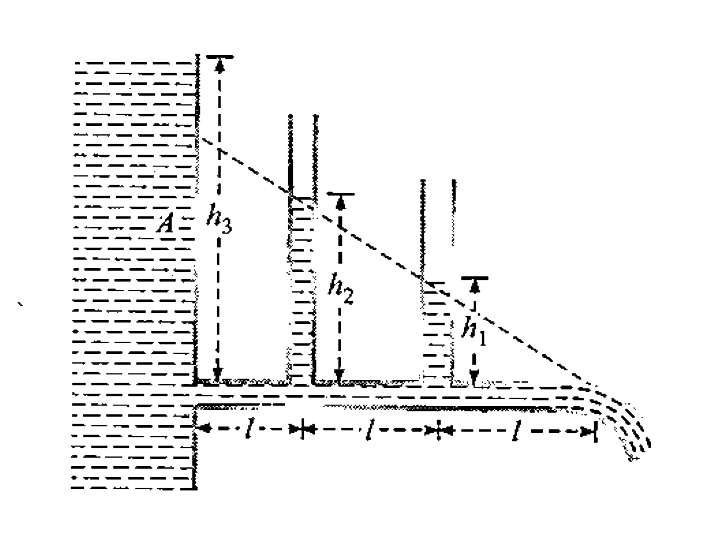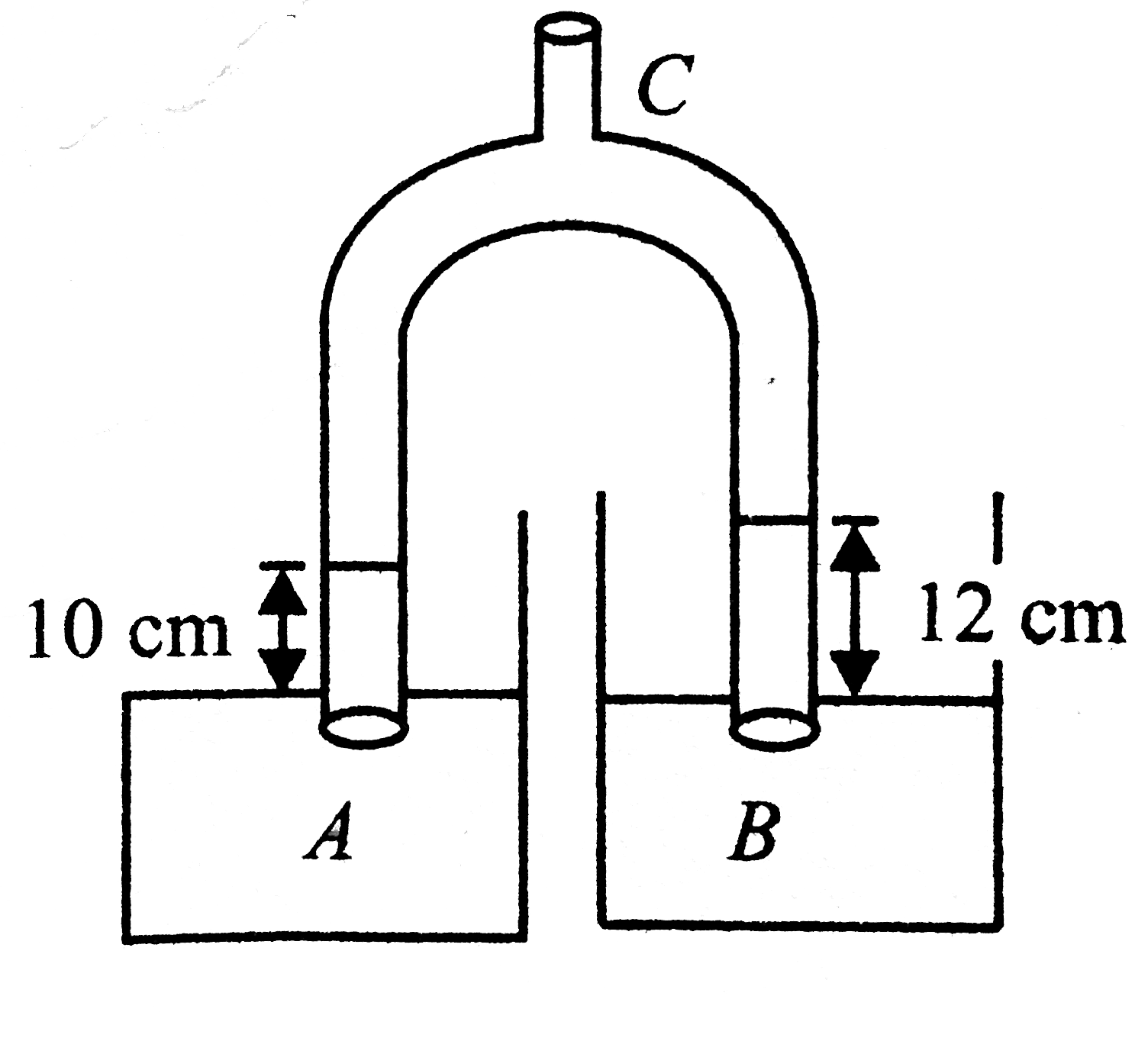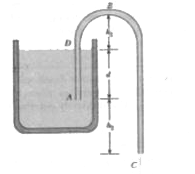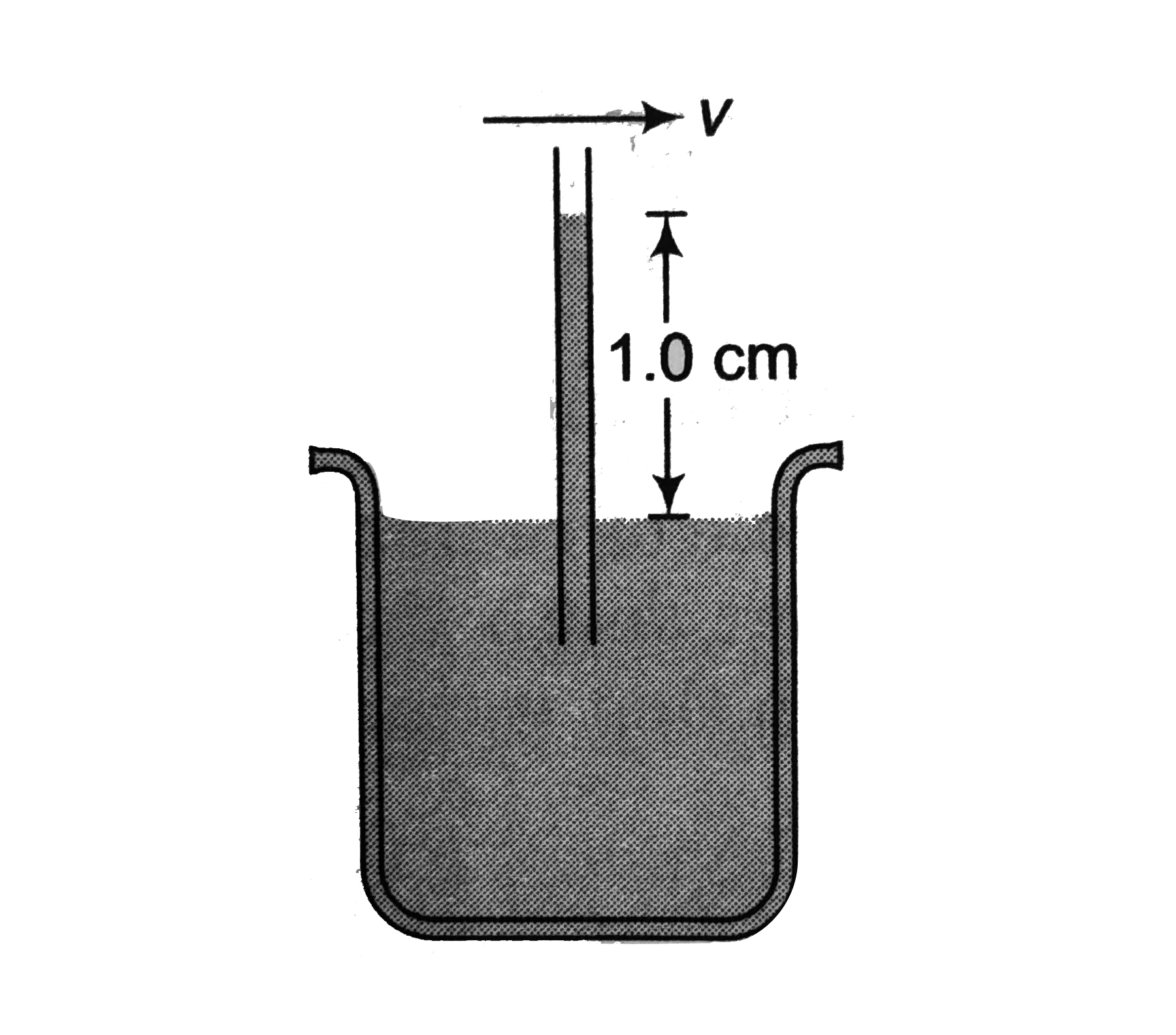In the arrangement shown in figure a viscous liquid whose density is 1gm/cm3 flows along a tube out of a wide tank A. Find the velocity of the liquid flow if h1=10cm,h2=20cm,h3=35cm. All the distances l are equal.

The correct Answer is:[1 m/s]
Step by step video, text & image solution for In the arrangement shown in figure a viscous liquid whose density is 1gm//cm^(3) flows along a tube out of a wide tank A. Find the velocity of the liquid flow if h_(1) = 10 cm, h_(2) = 20 cm, h_(3) = 35 cm. All the distances l are equal. by Physics experts to help you in doubts & scoring excellent marks in Class 11 exams.
Updated on:21/07/2023Topper's Solved these Questions
Similar Questions
In the arrangement shown in figure a viscous liquid whose density is ρ=1.0g/cm3 flows along a tube out of a wide tank

A. Find the velocity of the liquid flow, if h1=10cm, h2=20cm, and h3=35cm. All the distances l are equal.
View Solution10g of a liquid of density 5gcm−3 is mixed with 12g of another miscible liquid of density 4gcm−3. Find the density of mixture.
View Solution
Knowledge Check
Number of moles of water in 1L of H2O with density 1g/cm3 are
A55.56B45.56C56.55D56.45The velocity gradient of certain liquid is 5s−1. If thickness of liquid layer is 2.5 cm, then velocity of flow of liquid will be
A10 cm/sB2.5 cm/sC12.5 cm/sD5 cm/sThe limbs of a U-tube are lowerd into beakes A and B. A contains water and B some other liquid. Density of water is 1g/cm3 . Some air is pumped out from C and then this end is closed, as a result of this liquids rise by 10cm and 12cm respectively, on the left and right side. which of the following is/are correct?
 ADensity of the liquid in B is 0.83g/ccBThe heights raised by water and the other liquid in both the sides will change if beakers are kept at different heightsCThe heights raised by water and the other liquid in both sides will be inependent of the positions of the beakers.DLiquid inB in denser than water in A.
ADensity of the liquid in B is 0.83g/ccBThe heights raised by water and the other liquid in both the sides will change if beakers are kept at different heightsCThe heights raised by water and the other liquid in both sides will be inependent of the positions of the beakers.DLiquid inB in denser than water in A.
Figure shows a siphon , which is a device for removing liquid from a container . Tube ABC must initially be filled , but once this has been done , liquid will flow through the tube until the liquid surface in the container is level with the tube opening at A . The liquid has density 1000kg/m3 and negligible viscosity . The distances shown are h1=25 cm d = 12 cm and h2=40 cm
(a) With what speed does the liquid emerge from the tube at C ?

View SolutionFigure shows a siphon , which is a device for removing liquid from a container . Tube ABC must initially be filled , but once this has been done , liquid will flow through the tube until the liquid surface in the container is level with the tube opening at A . The liquid has density 1000kg/m3 and negligible viscosity . The distances shown are h1=25 cm d = 12 cm and h2=40 cm
Theoretically , what is the greatest possible height h1 that a siphon can lift water ?
View SolutionIn Fig , if h1−h0=1.0cm,h0=100cm,andt=20∘C , what is the value of γ for the liquid ?
View SolutionFigure shows a siphon , which is a device for removing liquid from a container . Tube ABC must initially be filled , but once this has been done , liquid will flow through the tube until the liquid surface in the container is level with the tube opening at A . The liquid has density 1000kg/m3 and negligible viscosity . The distances shown are h1=25 cm d = 12 cm and h2=40 cm
If the atmospheric pressure is 1.0×105Pa, what is the pressure in the liquid at the topmost point B ?
View SolutionWhen air of density 1.3kg/m3 flows across the top of the tube shown in the accompanying figure, water rises in the tube to a height of 1.0cm. What is the speed of air?

View Solution
